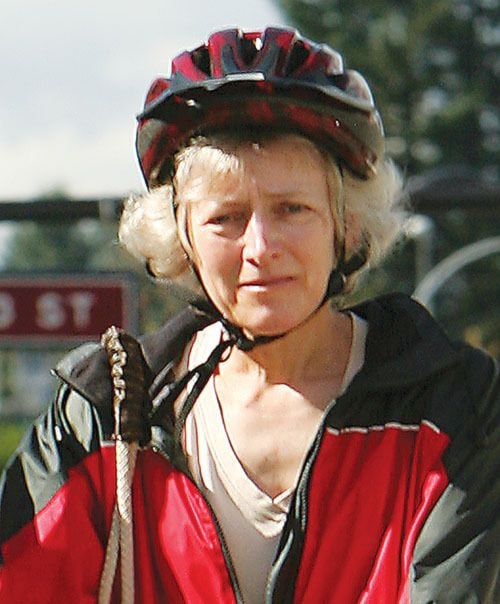The dikes in Pitt Meadows and Maple Ridge are pretty awesome, build by the Dutch after the Second World War.
I think they are one of the best things that ever happened to our area north of the Fraser River.
Apart from the valuable farmland that was created, many people now use the dikes that protect the farmland from flooding for leisurely strolls, bike rides or horseback riding.
It was a smart move by the City of Pitt Meadows and the District of Maple Ridge to build trails on the dikes.
The Dutch have more clever ideas and skills than just building dikes, though. They also design and build great cycling infrastructure.
Many cities in Holland are old, and built right from the start for active transportation: walking and biking, with narrow streets, and schools, neighbourhood shops and other amenities at walking or biking distance from where people lived.
But there are also newer cities and newer neighbourhoods that are just as wonderful for cycling. Where the car speeds and volumes make cycling on the road uncomfortable, separated bike paths are provided, so that young and old feel safe getting around. And just like there are extensive cycling networks within cities, there is an extensive cycling network throughout the whole country.
After the Second World War, governments at all levels in Holland started building more roads for cars, just like everywhere else, and cycling didn’t get a lot of attention anymore. That lasted until the early 1970s, about 25 years. The oil crisis shook the decision makers back to their senses. They also realized they couldn’t go on building ever more roads, with the limited space available, especially in the densely populated western part of the country.
The expanding roads didn’t seem to solve the congestion problems anyway. It was decided to focus on improving both transit and cycling infrastructure as alternative transportation options, and they’ve never looked back.
Now, after some 40 years of consistent investments in cycling infrastructure and lots of trial and error, resulting in an amazingly efficient and well-functioning cycling network, the Dutch are reaping the many benefits. Their cities are much more livable, they have much less air and noise pollution, produce much less greenhouse gasses per capita, need much less space for parking and roads than would have been the case if many of the trips presently made by bicycle or transit were made by car, and they’re less fat.
Some statistics: of all trips made in the Netherlands, 26 per cent are by bike; of trips shorter than five km, 36 per cent are made by bicycle.
A stat that I think is quite interesting for folks in Maple Ridge and Pitt Meadows, both served by the West Coast Express: of all trips to train and bus stations in Holland, 39 per cent are made by bike. You should see all the bikes parked at train stations, sometimes numbering into the thousands.
And, the percentage of trips by bike in Holland by those 65 and older: 25.
In other European countries, the awareness that cycling offers huge benefits, not only to cyclists, but to everyone, is growing rapidly, and amazing things are happening.
Until recently, Seville, Spain, a city of 700,000, had no cycling culture. Five years ago, only about 0.2 per cent of all utilitarian trips there were made by bicycle – fewer than the number of trips made by bike in Maple Ridge or Pitt Meadows (one to two per cent). But now seven per cent of trips in Seville are made by bike. You can now see many children, women and elderly people pedaling around the city.
The Sevillanos looked north to the Netherlands for inspiration, and their goal was to create a complete bicycle network, so that cyclists were not left dangling on a thread, hanging on for dear life, when a bike lane suddenly ends.
The design target for the Seville cycling plan was a 65-year-old woman carrying groceries on her bike. In other words, if it’s safe for her, it’s safe for anyone.
The dikes are fantastic assets for Pitt Meadows and Maple Ridge, great for doing a weekend ride. But how can we get more people on their bikes for transportation, so that we can experience the same joys and benefits that cycling offers as the Dutch do?
Should we follow Seville’s example: learn from the Dutch, and start building the kind of cycling infrastructure that would entice granny to bike to the store, and even more importantly, the kind that would allow our kids to safely bike to school?
Jackie Chow is a member of the Maple Ridge/Pitt Meadows chapter of the Vancouver Area Cycling Coalition.
